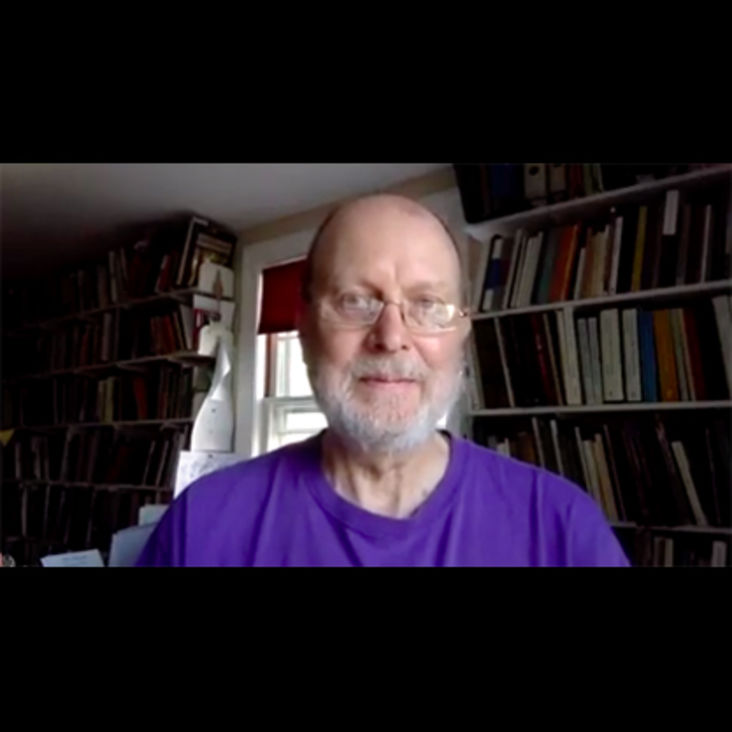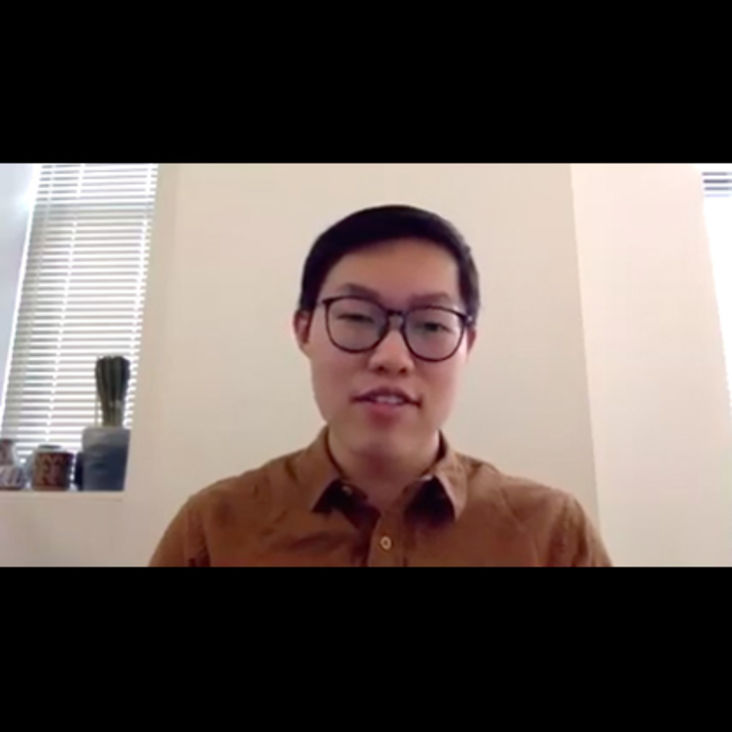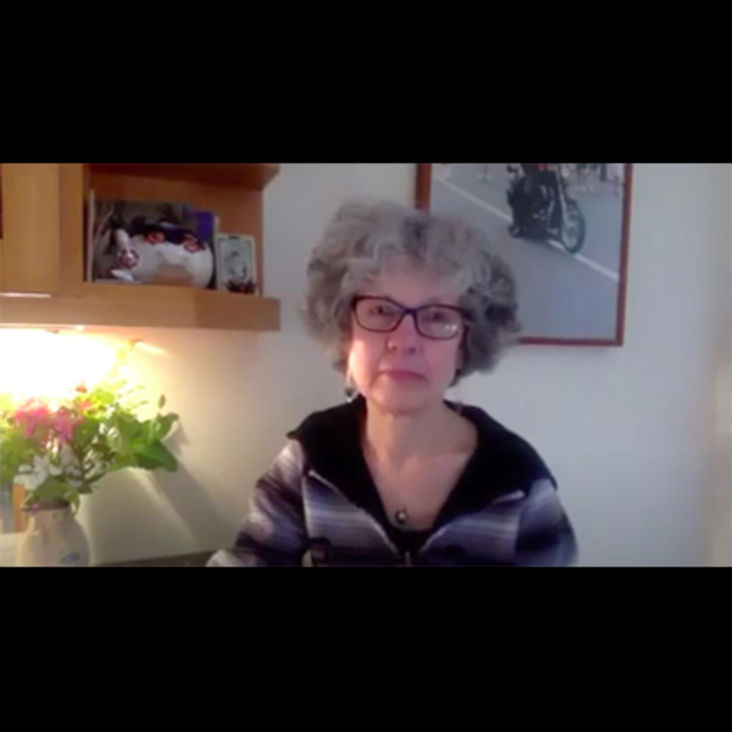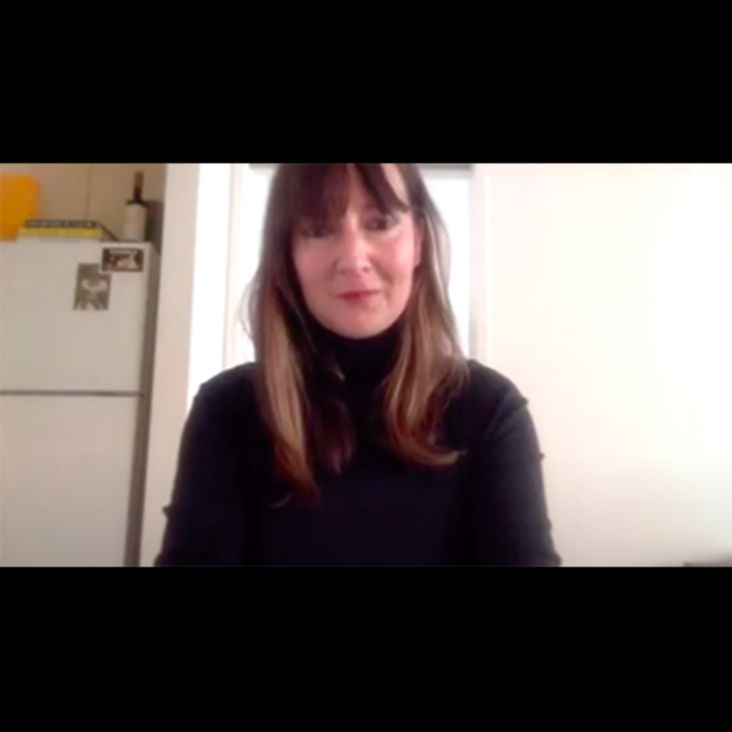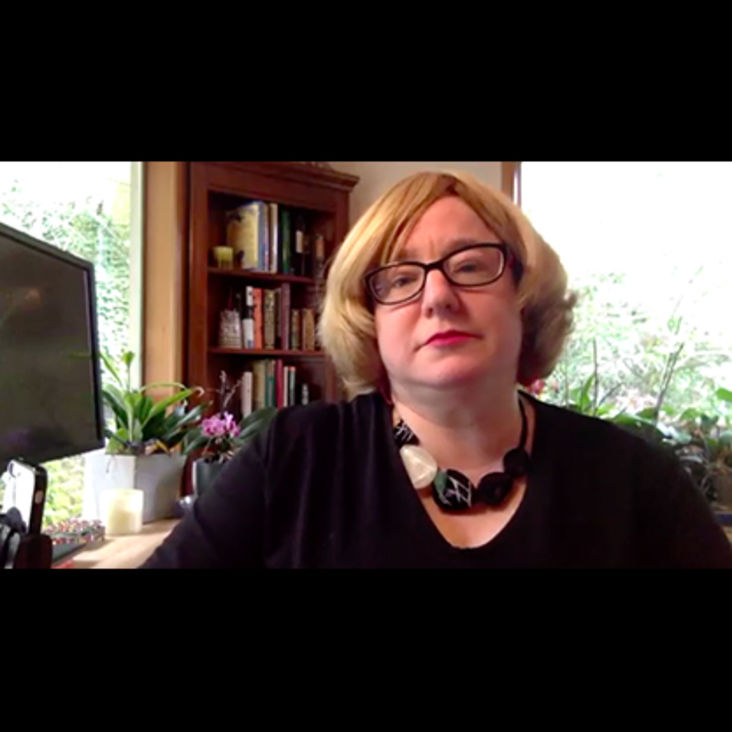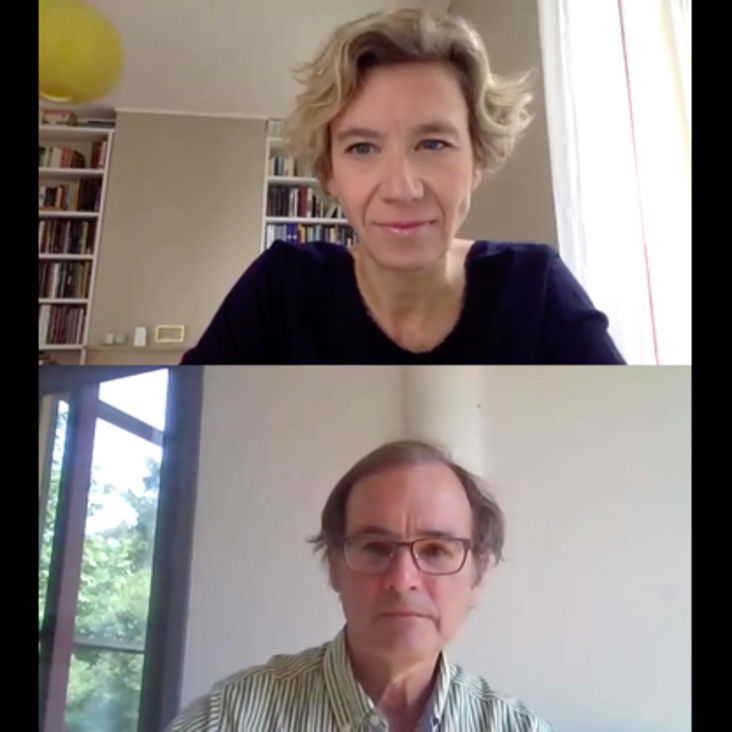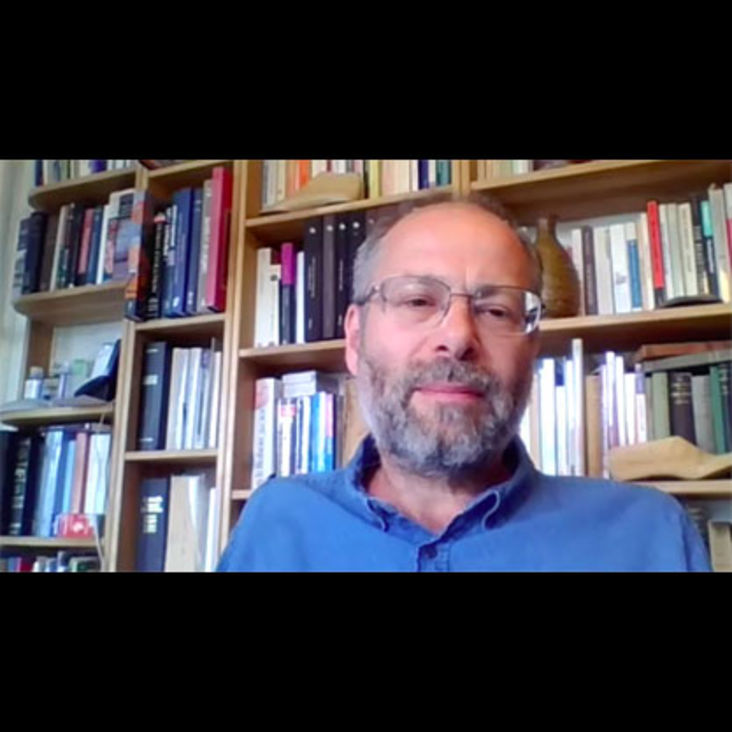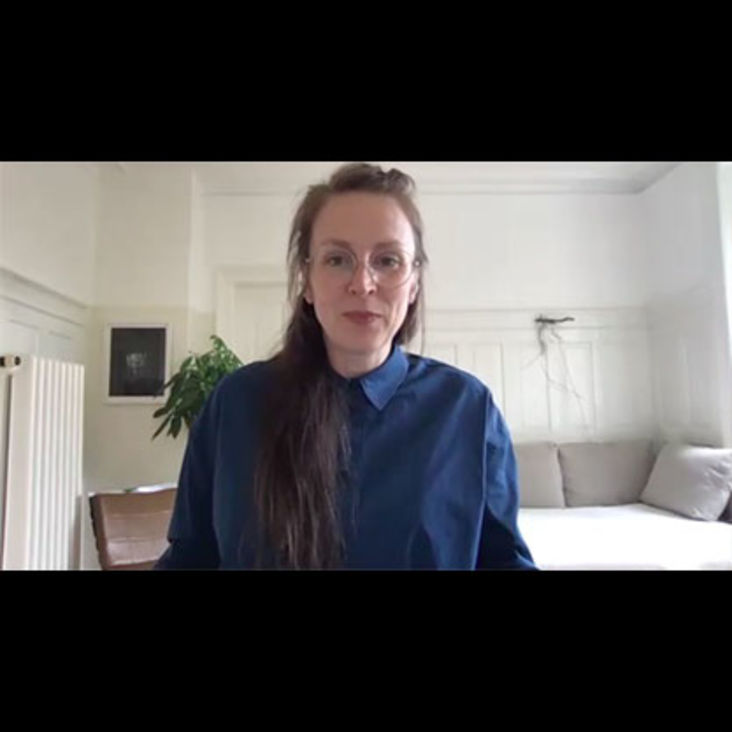Three Questions with BGC Research Fellow Beeta Baghoolizadeh
Recently, BGC Dean Peter Miller chatted with Beeta Baghoolizadeh, a BGC research fellow in residence through December. Baghoolizadeh completed a PhD in history at the University of Pennsylvania and is an assistant professor of history and Africana studies at Bucknell University. She is currently working on a book tentatively titled, The Color Black: Visualizing Slavery and Abolition in Iran, 1800-1979. The Color Black draws on visual, textual, and spatial sources to examine how the term “Black” came to take on different meanings in Iran throughout each phase of abolition, emancipation, and then afterwards in the lasting legacies of slavery. She also directs Ajam Digital Archive, a crowd-sourced archive of family life in the Persianate world during the twentieth century. Her visual project (Instagram: @diasporaletters) plays with memory and nostalgia through its focus on scenes from the mundane in Iranian life. She has shared her graphic illustrations in several venues, including her first solo exhibit in 2018. She is working with an animator on a short documentary film.
In October, Baghoolizadeh offered a three-part lunchtime pop-up course entitled “Blackness in Iran: Legacies of Enslavement and Abolition in the Nineteenth and Twentieth Centuries” to the BGC community. The first session centered on “A Language of Color: Race and Racialization in Nineteenth-Century Persia;” the second session focused on “Photographing and Seeing Race: 1840–1906;” and the third session took “The Afterlife of Slavery in Blackface Theater, 1940s–1979” as its subject.
PNM: How did you become interested in studying Blackness in Iran?
BB: When I was a master’s student, I attended a talk on slavery in modern Egypt, and the entire time my mind was racing because of all the parallels I recognized in Iranian history, particularly with regards to the connections between race, especially Blackness, and enslavement. Growing up in the Iranian diaspora community of Los Angeles, I had always heard adults tell me and my peers that Iranians did not see race, and that we didn’t have a history of slavery. The combination of having these questions while I was growing up and then seeing someone talking about a parallel in the Middle East motivated me to do my own research on Iran.
PNM: Is slavery a subject that people work on in Iran?
BB: The study of slavery in Iran is a fairly recent development, within the past 10 to 15 years. The difficulty in studying it is that there are very specialized terms for different types of enslaved people and their statuses in Iran. There is a catch-all term for slavery in Persian – bardeh – but by the mid-twentieth century that term came to refer only to American plantation slavery. This is partially because of the “Hollywood effect”: Gone with the Wind, both the book and the movie, became very popular worldwide, and especially in Iran. This was something the U.S. State Department wanted; it was part of the Cold War effort to export U.S. culture. So, Iranians became very familiar with the concept of American plantation slavery, but that’s not what slavery looked like in Iran where most slavery was domestic, as a sign of status. It wasn’t something that the economy was built on. You definitely saw economic terms of slavery along the Persian Gulf Coast, but that’s not where the center of power was, and that’s not what influenced how people understood slavery.
Because of that, if you use this catch-all term in Persian, and you say, “I’m studying slavery in Iran,” Iranians say, “No, we never had any slaves. That’s a very American thing, and you’re American, that’s why you think that.” Because I am an Iranian American; I was born and raised in Los Angeles. And then if you use the specialized terms, they say, “Oh yes, we had that.” So there’s this disconnect. There’s this cognitive dissonance that has emerged and these terms have become sanitized, so these enslaved people are sort of understood to have been servants. In Iran, enslaved people might have been paid in small amounts, but they wouldn’t have necessarily had control over their own movement. These terms get sort of mixed up, you know, and people use them to deflect.
Also, the process of abolition in Iran was 100% a process of erasure. Reza Shah Pahlavi, who was in power from 1925 to 1941, is remembered for really trying to modernize the face of Iran in many ways. But actually, the first thing he does is he takes slavery off the books. He abolished slavery. He is not remembered for that, because he actively tried to erase any footprints of slavery, including the process of abolition itself. And so he created this vacuum, and once Iranians started seeing these things like Gone with the Wind and Uncle Tom’s Cabin and all these different cultural imports from the U.S., that version of slavery became associated with the Persian catch-all term. So, there is a sense of slavery in Iran, but if you speak to people who aren’t versed in the history, it can become a very combative sort of conversation.
PNM: I was just thinking as you were talking that I could imagine slavery being a difficult subject to work on for two reasons. One is the loss of language or the replacement of the content, as you just described, so that your work ends up requiring a peeling away and a re-education. And then at the same time, there could be political reasons why the topic itself is either inaccessible or undesirable.
BB: Yes, it was a very political move on behalf of the Pahlavi dynasty, who ruled from 1925 to 1979. It was very much a political move to distance themselves from slavery as much as possible and Reza Shah, mostly abolished any signs of the fact that he abolished slavery, but his son, Mohammed Reza Shah, took it a step further and said, Cyrus the Great freed the slaves, and this is the sort of repartée that people give me. They’re like, “No, no, no, we didn’t have slaves; Cyrus the Great freed them all.” This is such a misrepresentation of that ancient history.
However, the first really edited volume on slavery came out of Iran’s Parliamentary Library. So even though there’s no real conversation about it on any grand scale, the current government is not preventing the conversation from taking place, which I think is an important distinction. I was able to go and work in the national archives, the parliamentary archives, and other various state-owned and family archives in Iran, and no one stopped me. But I can also see how my research can be wielded in different political ways, and I’ve always been very sensitive to that. At the same time, I think it’s a history that should be studied and understood and addressed.
PNM: To dovetail on your last comment, do you have more of an audience in the U.S. where slavery is a national subject, and we’re looking for comparanda elsewhere, or is your audience in Iran, or are there two different audiences and the Iranian audience is thinking about it in its own terms and you speak to both of them?
BB: I do think I speak to several audiences. I think the topic I study addresses different things for different audiences. Within the academy, among people who do not study Iran but do study race, visual culture, Africana studies, my research is interesting because it shows how Blackness was not this fixed thing. This is sort of the predominant, “old guard” understanding of race and Blackness in the Middle East: either that there was no sense of race and no understanding of Blackness, and this was all an American export, or that the Middle East has always has a sense of what Blackness is, and it was fixed since time immemorial. What my research does for that audience is to show that within a period of 40 years there are four different meanings of Blackness. It was changing very rapidly, and it was malleable based on different geopolitical and social changes that were occurring. That’s what one audience sort of latches on to.
I do try to center Black Iranians, and I now work with a few of them in the Collective for Black Iranians as their resident historian. And many of them, despite their personal experiences otherwise, had been told that Iranians can’t be racist. I think—and hope—that my research has helped in pushing back against these assertions, and that it pushes Iranians to have conversations that need to be had.
Unfortunately, for the majority of the Iranian audience in diaspora, however, the thing that’s really interesting for them is a holiday minstrel. His name is Haji Firuz, and every year for Nowruz, the first day of spring and the new year, he appears. Nowruz is a 13-day holiday. Every day the radio, the Persian satellite channels, and any sort of media produced for Nowruz includes this character. He is in blackface; he wears a red outfit; he has a tambourine; he has a dance; he has a song that we all know and grew up with. And I think for many in the diaspora, it’s always been this question mark. I not only study slavery and abolition, but also the genealogy of this character. So many different origin stories have emerged that divorce Haji Firuz from the history of slavery. But actually, he’s directly coming out of the mocking of slaves, which is something I talk about in the pop-up course. So I think there’s this gap, this question mark, for a lot of Iranian Americans and others, and being able to piece it together becomes exciting for them.
For Iranians in Iran, I don’t actually know too well how my research has been received beyond the emails I have gotten that say, “Whoa, I had no idea.” That’s partially because I don’t live there permanently. I’ve gotten to go for research trips, and I do still have family there, but I’m not as well connected within Iranian intellectual circles. I do know some of my work has been translated into Persian, so I know it’s being read, and I know it’s being circulated.
So it does have very different functions in different circles, which I think is really interesting and exciting.











